



SELECTED
ISSUE
|
|
Leisure Management - The resistance movement

Resistance equipment

|
|
| The resistance movement
|

With today’s buzzwords being free weights, functional and bodyweight training, how is the resistance offering at the gym evolving – and is there still a place for fixed resistance kit? Julie Fisher asks a panel of suppliers for their thoughts
|
|
|
 |

Ease of use and Education |
 |
Miles Rimell
Marketing Director EMEA & APAC
Precor
At Precor, we believe fixed resistance machines still command a place on the gym floor. Indeed, according to IHRSA’s Profiles of Success 2011 report – which looks at member participation by equipment and group exercise category – 2.1 million members use resistance machines annually. I think the important issue is not whether they are here to stay, but how we enable those new to exercise to use them, as well as improving the offering for more experienced users.
A key benefit of conventional strength training is how it adapts to meet the user’s level of fitness and encourages proper technique, which reduces injuries. But it has to be easy to use, and educating the user is paramount.
When we developed the Precor Discovery Series Selectorised Line, we observed people using their smartphones and took inspiration from consumer products. We focused on taking the intimidation away from strength equipment, making it inviting and approachable, while still providing an improved experience for serious strength exercisers. That meant incorporating easy to understand graphics and, if members are still unsure about a piece of equipment, there are Quick Response (QR) codes that enable them to use their smartphones to view instruction videos.
| |
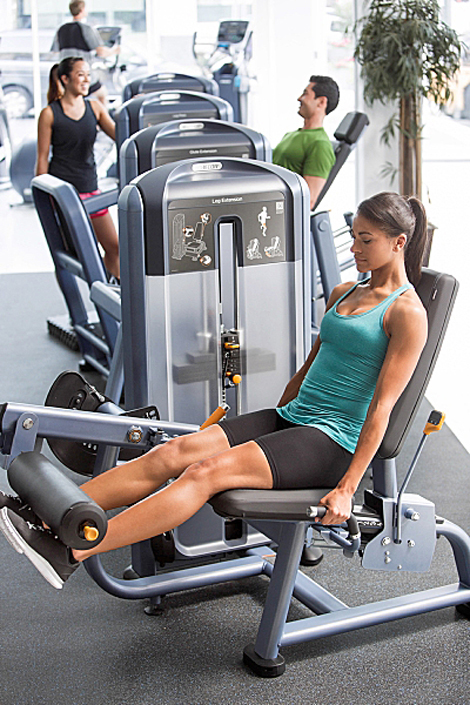

|

Precor Discovery Series: QR codes offer access to instruction videos |
|
|

|
Allan Collins
Director of Education
Jordan Fitness
The traditional view has always been that resistance training is used for strength and bodybuilding, while CV machines are used for aerobic fitness and fat loss.
However, the concept of resistance training has changed over the last few years – it’s no longer just about strength training – with a paradigm shift in the use of free weights as functional training has evolved. Now trainers understand that it’s more about movement, with the end result in fact subject to the training parameters used: free weights can be used for aerobic gains, for example, just as a treadmill can.
Describing exercise in terms of resistance training or CV training is an outdated concept. Kettlebells are a great example of how free weights are now an accepted method for strength endurance, body composition changes (fat loss) and even cardiovascular improvements, as well as an alternative to CV machines.
| |
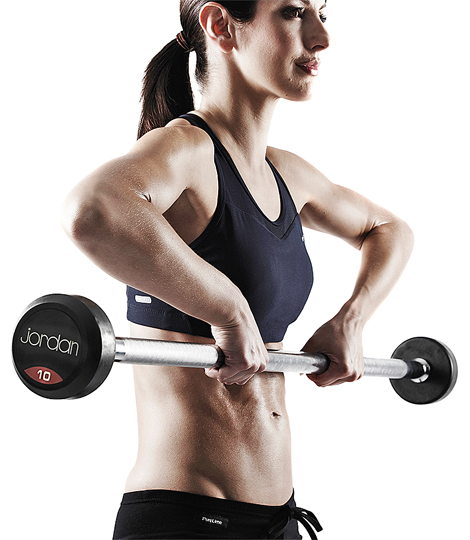

|

Free weights can also be used by those wanting aerobic gains |
|
|

|
Rob Thurston
Commercial Director
Cybex International UK
We’re seeing a significant increase in the number of high street gyms and health clubs that are growing their strength equipment provision through products that would, conventionally, have been associated with high performance and sports conditioning facilities. Power racks, half racks and lifting platforms are replacing more traditional options, like squat racks, as members demand versatility and quality from their gym’s equipment.
The shift from selectorised and free weights equipment towards cable-based machines is also a growing trend among gyms. Cable machines or functional trainers are multi-purpose, offering users a full body workout with an extensive range of exercise options; compare that to a single piece of selectorised equipment, for example a leg press, that could feasibly take up just as much floor space but targets just one muscle group.
Product innovation has also meant strength equipment is becoming easier to use, more aesthetically pleasing and less intimidating, while better awareness and understanding from the user means cable machines offer a highly accessible strength training option, regardless of age, gender or training ability.
The demand for information from users has also fuelled a rise in educational tools and aids, with equipment suppliers offering online tutorials, smartphone apps and training guides to support workouts.
| |
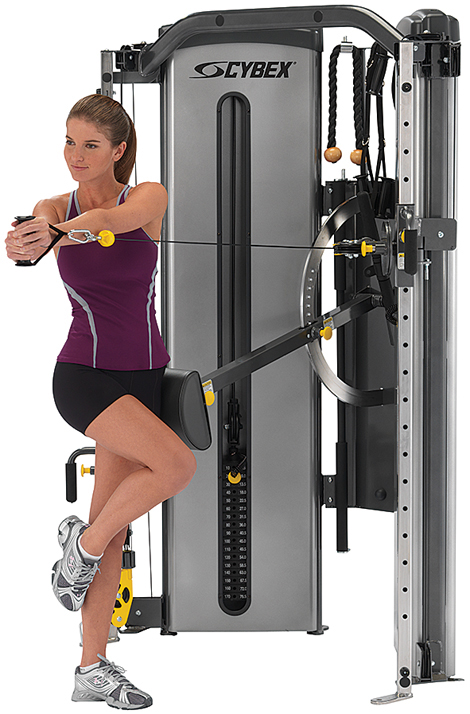

|

Cable machines: Smaller footprint, but more functionality |
|
|

|
Nick Mennell
EMEA Education and Global Journey Manager
Life Fitness
New forces are reshaping the health club model globally, and strength training is smack bang at the forefront. Radical changes have been taking place, with a shift from cardiovascular to strength training using body weight as the resistance.
We’re seeing the emergence of a new, unconventional gym model – the strength and conditioning gym – which is a refreshing antidote to the conventional model. Examples include the warehouse gym model, with clubs like the Better Body Shop; MMA clubs such as Fight Science; and athletic performance gyms including City Athletic. The common denominator is that they are largely machine-free. The body is the machine and bodyweight training is an essential conditioning stimulus.
From researching global fitness trends, including the popularity of strength training, Life Fitness developed the SYNRGY360, a customisable exercise system that facilitates eight of the top 20 trends in the ACSM’s recent survey of fitness trends: functional fitness, strength training, personal training, core training, group personal training, boot camp and sport-specific training.
The modular design of the system makes it possible to choose a configuration that meets varying training philosophies, and many of the training applications focus on the user’s body as the source of resistance: suspension training, for example, and boxing.
| |
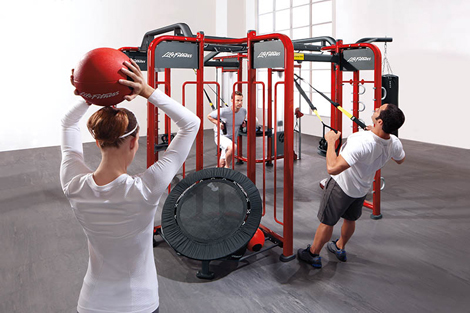

|

Life Fitness’ SYNRGY360 system uses body weight to provide the resistance |
|
|
Tim Colston
Managing Director
Keiser UK
There’s still a place for single station resistance machines. However, the days of rows and rows of single station machines are numbered. Instead, gyms will offer a single line or small number of single station machines, predominantly for beginners to use.
At Keiser UK, we’re seeing more demand for small circuits, with one line of multi-faceted fixed resistance equipment that will cater for everyone, from the elite to older populations and, of course, new members.
As more zoned and open plan areas are introduced into gyms, at the expense of traditional CV and resistance areas, the ratio of CV equipment to resistance equipment is also likely to change. Moveable equipment will become more prevalent, catering for a multi-purpose gym that can be focused around personal training areas and gym floor-based group exercise classes.
| |
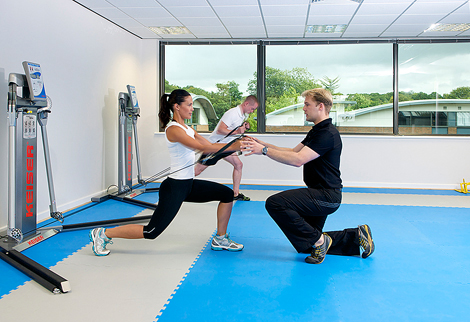

|

A line of multi-faceted fixed strength kit can cater for all populations |
|
|

|
James Anderson
UK Sales Manager
Star Trac
There’s still a need for fixed strength kit in gyms, not least because that’s what members are used to. However, manufacturers need to adapt existing resistance equipment to make sure traditional resistance methods cater to new trends – for example, the focus on free weights, functional and bodyweight training to help the body move with more freedom.
Star Trac’s HumanSport range offers the best of both worlds, using cable resistance to help people move in a more natural way, free from restrictions. The range can be used by personal trainers, but can also be incorporated into a group exercise class, where participants work around the station as they would in a circuit class. Royal County of Berkshire Health and Rackets Club – part of the Virgin Active Group in the UK – has been running very successful classes for some time.
Our MaxRack – another ‘bridge’ piece of equipment – lets people perform free weight power rack training with the safety of a Smith machine. A halfway house between fixed and free weight, it’s an example of how traditional resistance equipment can be adapted rather than being sidelined by new trends.
| |
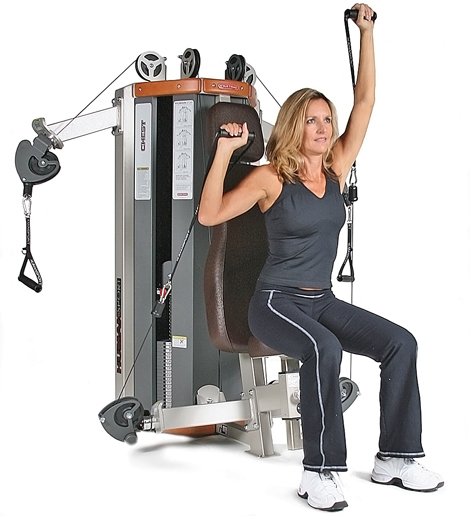

|

Equipment must adapt to
new trends to stay relevant |
|
|

|
Matthew Januszek
Customer Solutions Director
Escape Fitness
As a longstanding staple of a club’s equipment list, members are back on board with free weights. Why has the recent upsurge occurred? One of the key reasons is training methods. Functional training is on the rise and trainers are incorporating free weights into exercise programmes.
As education and training evolves and progresses, trainers are becoming more aware of the variety of exercises that are possible with free weights, and how using them correctly can aid weight loss, provide body definition and build strength. Free weights are now used in more rounded programmes – from studio classes to small group training – offering full body workouts and thus appealing to a far broader demographic.
The evolution of resistance training has seen a growth in innovative functional equipment, moving away from fixed machines, providing more choice and an increased demand for functional training sessions. Indeed, functional training has been the driving force behind increased usage and demand. Not only do free weights continue to give results, but they are also flexible enough to adapt to market changes, which is why they’re still the backbone of a club’s equipment list.
“The evolution of resistance training has seen a
growth in innovative functional equipment, moving
away from fixed machines”
| |
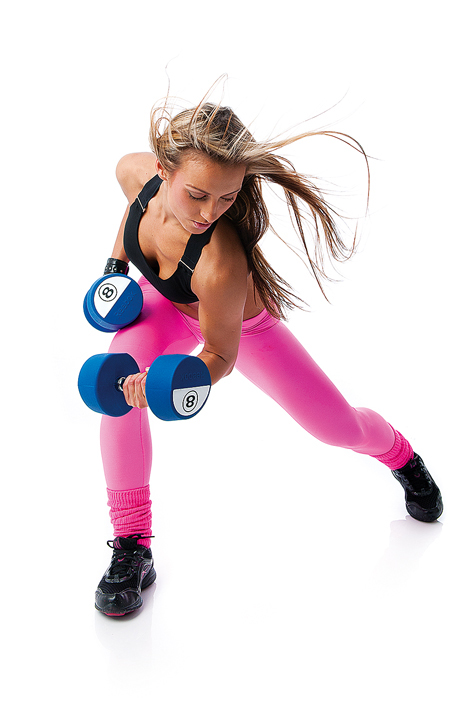

|

Free weights are being used by a broader demographic |
|
|

|
Craig Swyer
Product Manager
Technogym
We see the move towards functional training and away from traditional resistance training as an interesting opportunity for operators, and we believe new product and programming opportunities exist. For example, in 2011 we launched Kinesis Stations, which were designed to bridge the gap between functional and traditional strength training.
Offering complete freedom of movement through 360 degrees, the product can be used by any exerciser, regardless of level or ability, as well as in a variety of ways: small group training, personal training, or independent use by members.
Progressive training is what members are looking for – along with more flexibility, fun and engagement in their workouts – and Kinesis Stations facilitate this in a number of ways. They allow for ongoing progression of exercises, motivating clients to achieve their goals by continually challenging them, as well as driving engagement and interaction on the gym floor with staff able to demonstrate new exercises on the equipment. A great example of progressive strength training using Kinesis Stations can be seen at Hereford Leisure Pool, which has integrated the machines into its GP referral programme, supporting post-surgery rehabilitation.
Secondary spend can also be enhanced, as the stations are an excellent personal training tool, and operators can introduce new programming options specific to sports or special target groups.
|
|
 |
| Originally published in Health Club Management 2013 issue 3
|
|
 |
|
